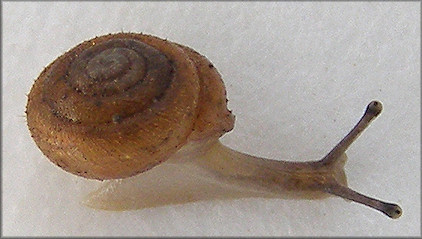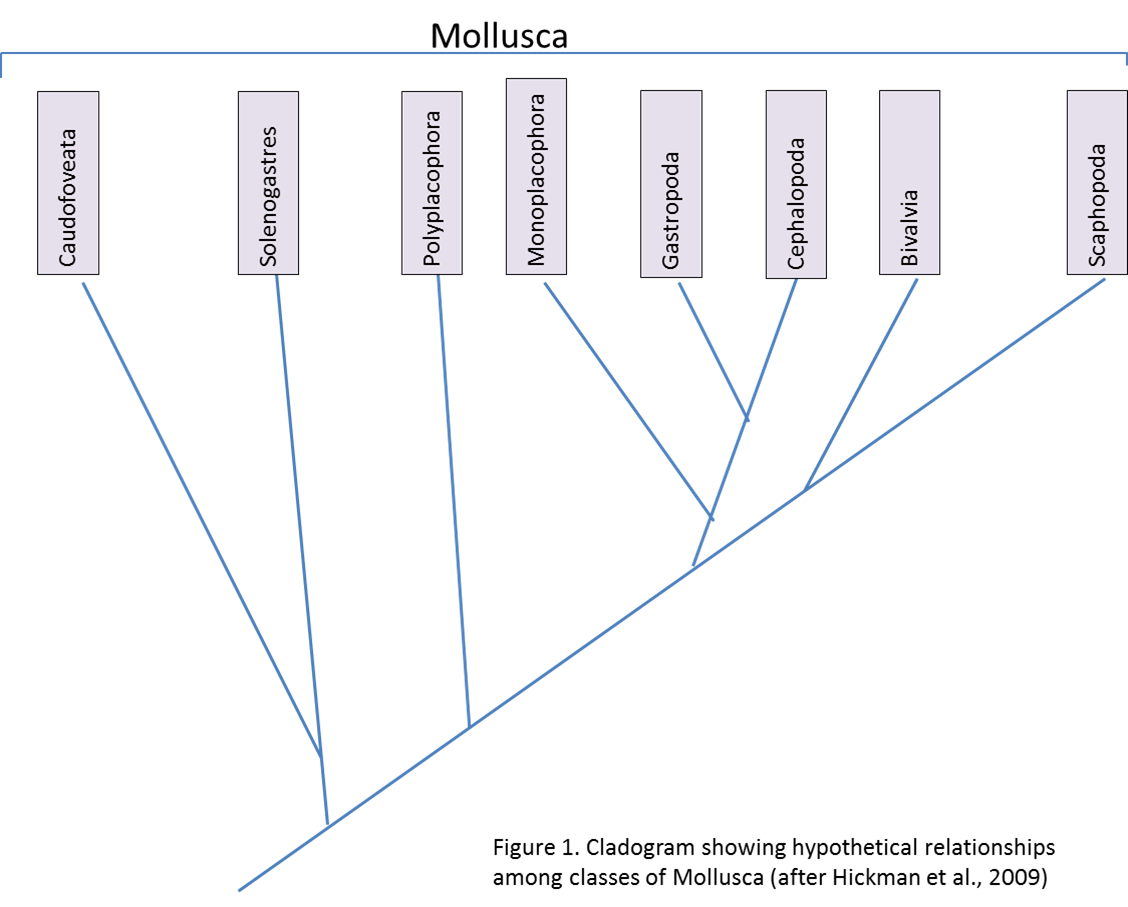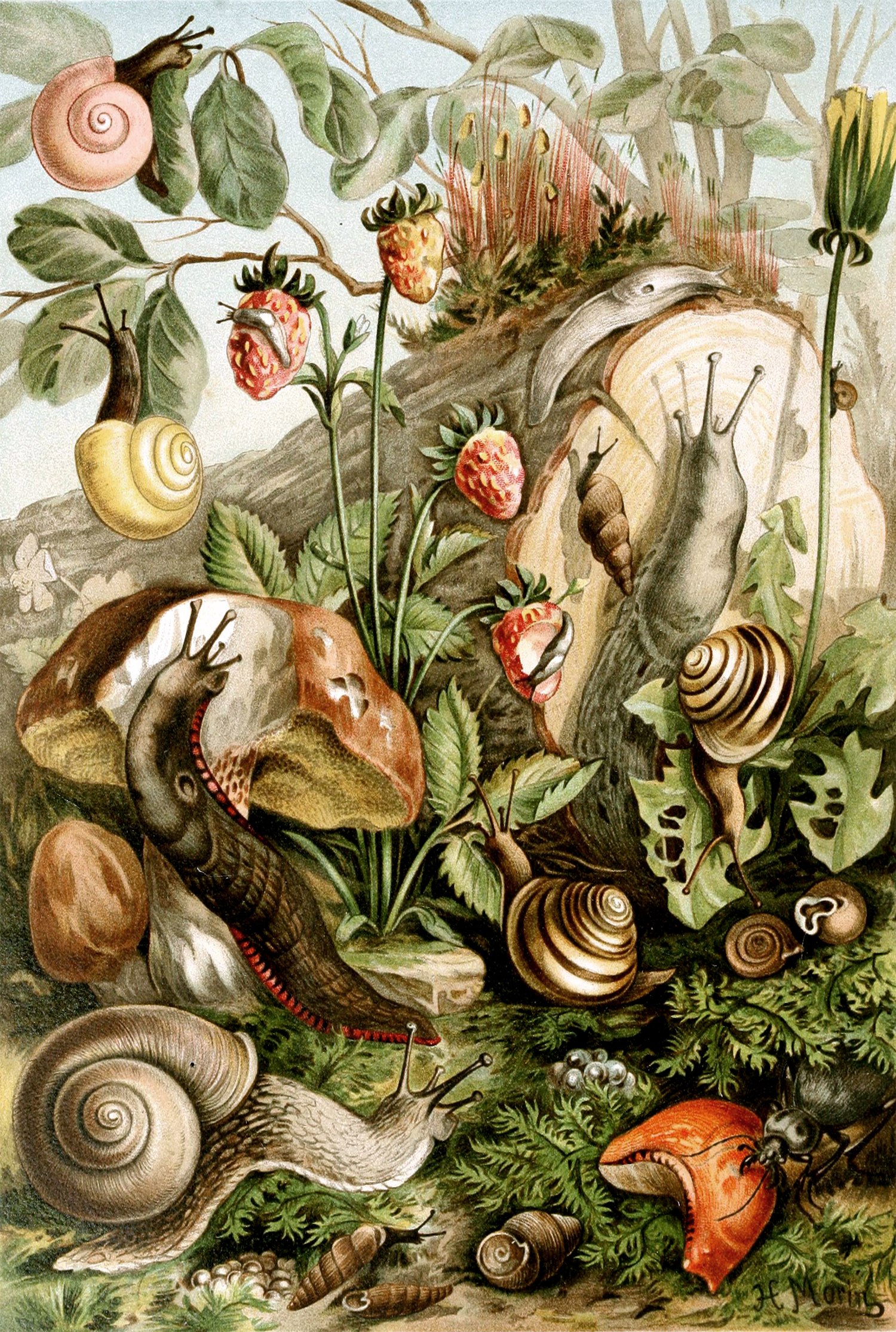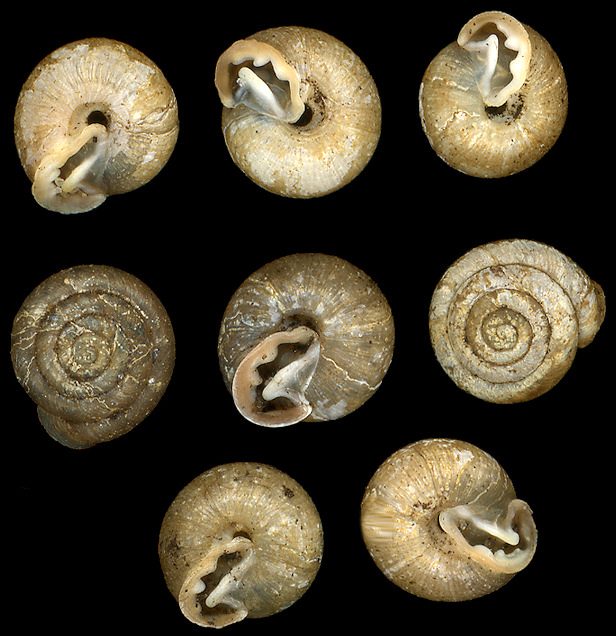The Eight Taxonomic Ranks of Lobosculum pustula
Domain: Eukarya
Kingdom:
Metazoan
Phylum: Mollusca
Class: Gastropoda
Order: Pulmonata
Family: Polygyridae
Genus: Lobosculum
Species: Lobosculum pustula (Grooved
liptooth)
The Hierarchy - Defined
Domain Eukarya: unlike bacteria and archaea, the cells making up the body structure of an eukaryotic organism have a true nucleus or true nuclei enclosed by a membrane and membrane-bound organelles (Keeling et al., 2009).
Kingdom Animalia: defines all multi-cellular organisms that have true tissues(Hickman et al., 2009). Animals, unlike plants which are photosynthetic autotrophs, lack cell walls and are heterotrophs, which means that their nutrition depends directly or indirectly on other organisms such as predation and herbivory, and organism interactions such as symbiosis and mutualism (Hickman et al., 2009).
Phylum Mollusca: the word "mollusc" or "mollusk" originates from Latin molluscus meaning "soft," thus this phylum is characterized by soft-bodied animals. Molluscs have bilateral symmetry and are triploblastic eucoelomate animals (Hickman et al., 2009). This means they have three true germ tissue layers (the ectoderm , the mesoderm, and the endoderm), and a true body cavity (coelom). Animals with bilateral symmetry are divided in two groups, the protostomes and the deuterostomes. Molluscs are members of the group of protostomes meaning that during embryonic development the blastopore develops into the mouth, unlike deuterostomes where the blastopore develops into the anus (Hickman et al., 2009).
A mollusc's general body plan consists of a head with specialized sensory organs and a mouth containing a radula, a foot region with many adaptations such as locomotion or attachment, and a visceral mass containing a mantle that secretes the shell (in some species) and a mantle cavity that houses digestive, circulatory, reproductive, and respiratory organs (Hickman et al., 2009).
Molluscs include a diverse group of animals, many of them very familiar to us such as snails, slugs, chonchs, scallops, clams, oysters, mussels, octopusses, cuttlefishes, squids, chambered nautilus and chitons. There are about 90,000 named living species and about 70,000 fossil species (Hickman et al., 2009). The fossil record of the phylum Mollusca dates back to the Cambrian period, but a Precambrian fossil called Kimberella (found in Precambrian rocks of southern Australia and north India and studied by Dr. Fedonkin and Dr. Waggoner in the Winter Coast of the White Sea in Northern Russia) shows evidence of being related to actual living molluscs (Bunje, 2003). The systematics of the phylum Mollusca is still changing, but the current hypothetical relationships among classes of the phylum Mollusca according to Hickman and colleagues (2009) are shown in Figure 1.
Class Gastropoda (Stomach-Foots): the word "gastropoda" is derived from the Ancient Greek gastér: stomach and poús: foot. It is the largest class within the Phylum Mollusca, with 70,000 living and 15, 000 fossil Species (Hickman et al., 2009). Many sea snails, sea slugs, freshwater snails, freshwater limpets, whelks, conchs, periwinkles, sea hares, sea butterflies, land snails, and land slugs conform this class.
The general body plan of a gastropod (Burch, 1962) consists of the following: a head (which bears two pairs of tentacles and a pair of eyes, a shell (not present some species such as slugs), a mantle (a thin but tough skin that covers the most inner organs that remain inside the shell of the snail and secrete calcium carbonate to form the shell or the internal skeleton), a large ventral muscular foot (which is joined by the head and is used for crawling, digging, or grasping prey), mucus or slime glands (which keep the dorsally tough and granular skin of the foot moist), a mouth, a pharynx, and a radula (a ribbon like structure with many chitinous teeth that is used for rasping food). A general body plan of a common snail can be seen in figure 2.
Figure 2. General body plan of a common snail. This illustration is a generalized body plan of an air breathing snail and does not represent the specific body plan of Lobosculum pustula.
A characteristic that differentiates gastropods from other molluscs is that they have undergone torsion, a 180° twisting of the shell and visceral mass relative to the head and foot, which occurs in the larval stage known as vilager (Pennington and Chia, 1985). Torsion of the body plan results in the digestive tract not longer being a straight tube but the anus and the mantle cavity are located on the side of the animal near the head (Burch 1962). In addition, many gastropods (like Lobosculum pustula) have undergone coiling, so that they have a coiled shell and a coiled visceral mass (Burch, 1962). Coiling allows growth of the shell along with the animal (otherwise the shell would grow too long and the organism would have difficulty moving). According to the position and character of their respiratory apparatus, gastropods are further classified into three subclasses or orders. Prosobranchiata have breathing organs (gills) in front of the heart, Opisthobranchiata have gills behind the heart, and Pulmonata have replaced the gills by an air or water-breathing lung (Burch 1962).
Order Pulmonata: Pulmonates are chararcterized by the absence of gills and presence of a lung as it was mentioned above. Pulmonate snails are further classified into three orders: Stylommatophora, Systellommatophora, and Basommatophora. According to Burch (1962), Stylommatophora is the most aboundant, includes land snails and slugs, and is characterized because the animals in this order bear two pairs of retractile tentacles with eyes at the tip of the upper pair. The order Systellommatophora includes a small group of tropical slugs, which bear two pairs of contractile tentacles with eyes at the tip of the upper pair (Burch 1962). The order Basommatophora includes freshwater pulmonate snails with one pair of contractile tentacles with eyes at the base (Burch 1962). The diversity of pulmonate molluscs is illustrated in figure 3.
Figure 3. Molluscs of the Order Pulmonata
Family Polygyridae: This family is the most widely spread in North America, from Canada to southern Alaska and the rest of the United States (except for Wyoming, Colorado, Utah, and Nevada), and Mexico (Pilsbry 1940). Polygyridae is characterized by having an expanded and thickened lip, a penis without a verge, no epiphallus or flagellum, and no accessory appendages upon the oviduct or vagina (Pilsbry, 1930). Also, they posses a spermatheca of short or medium type, a short and more or less lobed distally talon, and a long and narrow kidney (Pilsbry, 1930). The ocular and pharyngeal retractors unite into a common band from which the columellar muscle is free nearly to the posterior insertion (Pilsbry, 1930).
Four genera in the Tribe Polygyrini:
-
Giffordius is charancterized by having a posterior prostata gland, much shorter than the uterus, spermatheca of medim length, and is vivaparous (Pilsbry, 1930).
-
Polygyra has a prostata gland as long as the uterus, short spermatheca, with no appendix on the penis, and is oviparous (Pilsbry, 1930).
-
Praticolella has a glandular appendix, a depressed-globose shell, a simple (or no) parietal tooth in the lunate aperture, no internato butress on the axis, and a lung with distinct secondary veins (Pilsbry, 1930).
-
Lobosculum has a shell that is strongly depressed and hirsute, a trilobed aperture, two teeth on lip, one v-shaped or parietal wall, a callus or butress one-fourth whorl within on the axis, and a lung without secondary veins (Pilsbry, 1930).
Genus: Lobosculum - this genus was described by Pilsbry in (1930) as having a sculputure very simmilar to the genus Giffordius and a shell similar to Polygyra, but is independent from either of them.
Spcies: Lobosculum pustula - this species was previously referred as Polygyra pustula (Férrussac), but in 1930 was ranked as a species in the genus Lobosculum by Pilsbry. Identifying this species from others in the same genus can be difficult because their anatomy very similar to each other. The shell anatomy of Lobosculum pustula is illustrated in figure 4 and the original description of this species' anatomy as described by Pilsbry (1940) follows.
Figure 4. Lobosculum pustula shell structure (size is about 4.5 mm.)
"The shell is very small, umbilicate, depressed, with convex spire and rounded periphery, dilute cinnamon-buff, paler beneath, or between that color and pale olive-buff. Whorls closely coiled, the last descending steeply in front, constricted behind the outer and basal margins of the lip, and with deep spiral groove which forms a ledge around the umbilicus. Embryonic shell of 1 1/2 whorls, the initial fourth of a whorl smooth, short radial ridgelets then appear, the last embryonic whorl becoming closely covered with retractively radial wrinkle-striae. Later whorls are more coarsely but weakly striate in places often showing interstitial sculpture of microscopic wrinkles, running more obliquely, and in fresh shells, irregularly placed stiff hairs, mostly curved. The aperture is narrower, irregularly lobed. Peristome white, thickened within, the outer and basal margins reflected. Outer margin with a round tooth, which is separated from the inner-basal tooth broadly connected with the narrower outer-basal tooth, which is separated from the inner-basal tooth by a deep sinus. Within the last half of the whorl there is a strong spiral callous ridge on the axis, corresponding to the external furrow around the umbilicus, its forward end visible in the aperture. The parietal callus is heavy, and bears a long tooth, from the outer end of which a ridge runs to the insertion of the outer lip. The dilated columellar lip impinges upon the umbilicus."
Learn about the Habitat and Geogeraphic Distribuition of Lobosculum pustula
Return to the Home Page




